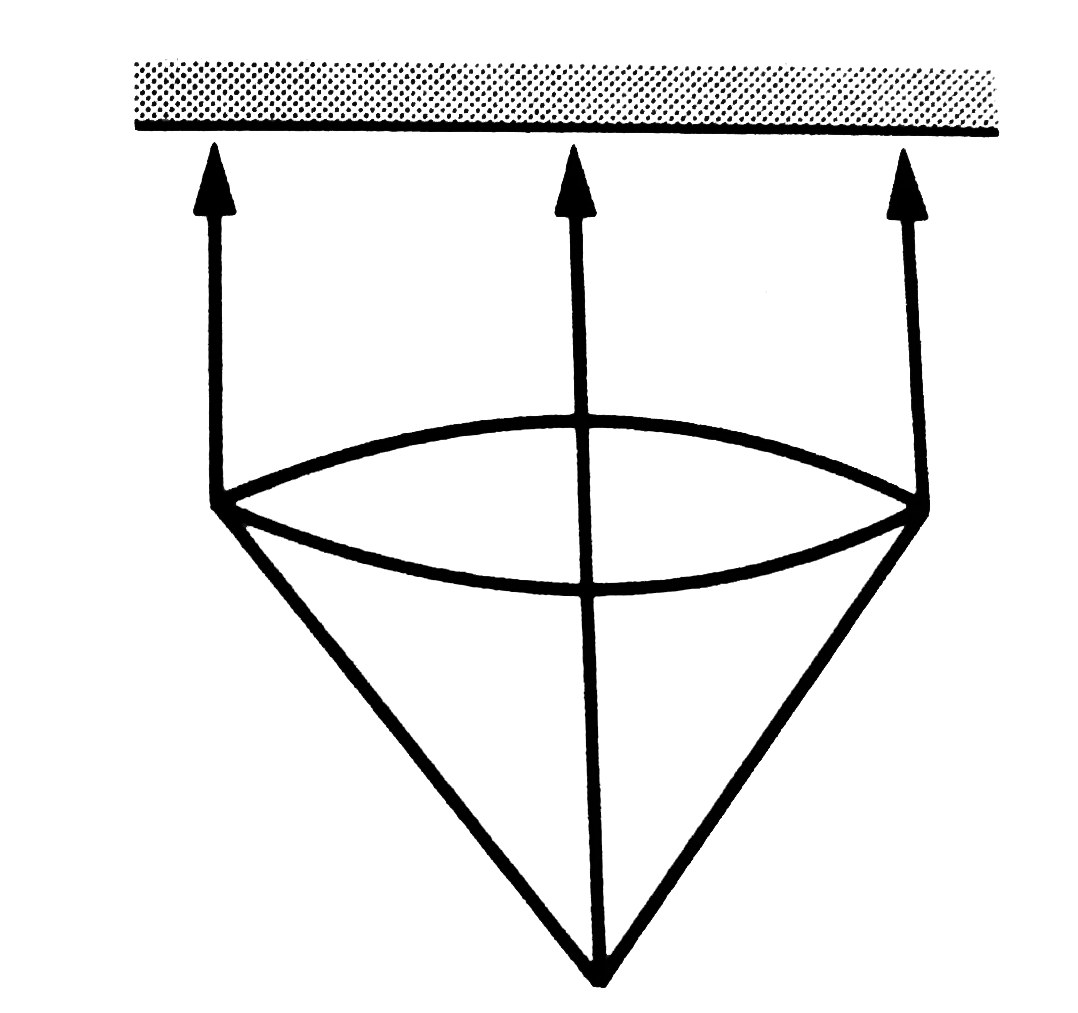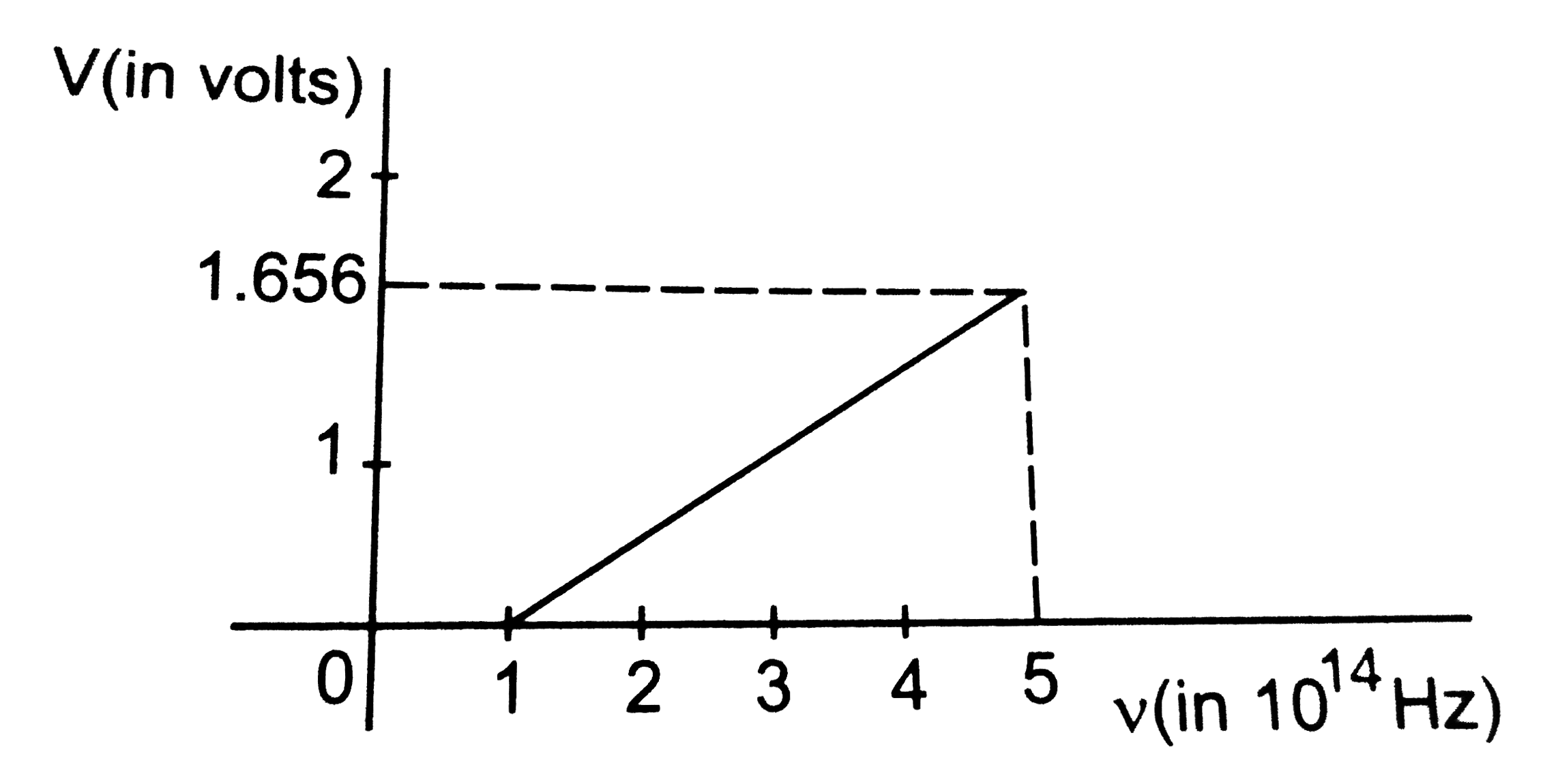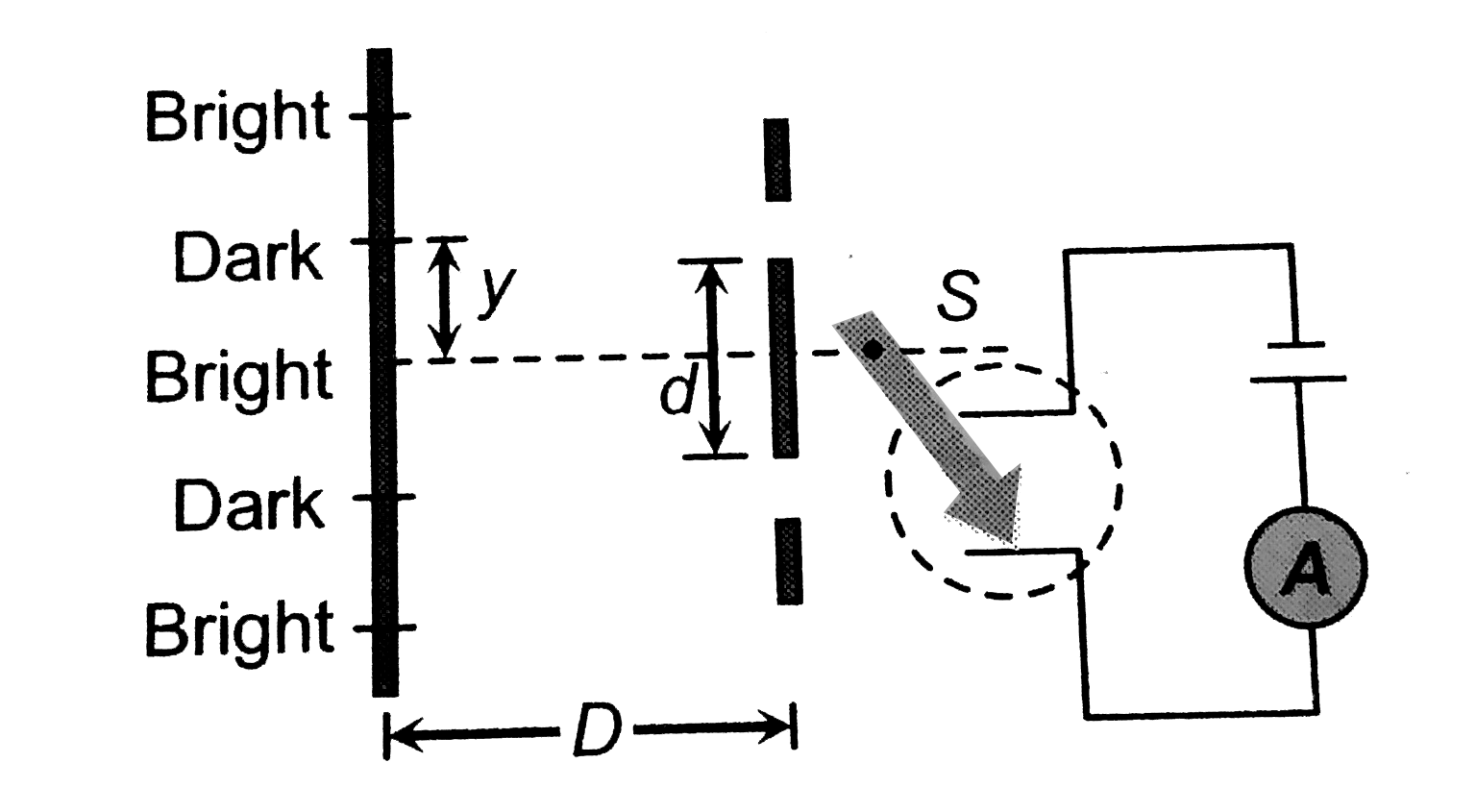Complete Solutions to Exercise of chapter PHOTO ELECTRIC EFFECT AND WAVE PARTICLE DUALITY of Class 12 book with complete answers and questions
| Class 12 | PHYSICS |
| Chapter | PHOTO ELECTRIC EFFECT AND WAVE PARTICLE DUALITY |
| HC VERMA | Exercise |
| Number Of Questions | 35 |
| Academic Year | 2023-24 |
Visible light has wavelengths in the range of 400 nm to 780nm. Calculate the range of energy of the photons of visible light.
View SolutionCalculate the momentum of a photon of light of wavelength 500nm .
View SolutionAn atom absorbs a photon of wavelength 500nm and emits another photon of wavelength 700nm. Find the net energy absorbed by the atom in the process.
View SolutionCalculate the number of photons emitted per second by a 10 W sodium vapour lamp. Assume that 60% of the consumed energy is converted into light. Wavelengths of sodium light =590nm.
View SolutionWhen the sun is directly overhead, the surface of the earth receives 1.4 xx `(10^3) W (m^-2)` of sunlight. Assume that the light is monochromatic with average wavelength 500mn and that no light is absorbed in between the sun and the earth's surface. The distance between the sun and the earth is 1.5 xx `(10^11)` m. (a) Calculate the number of photons falling per second on each square metre of earth's surface directly below the sun. (b) How many photons are there in each cubic metre near the earth's surface at any instant? (c) How many photons does the sun emit per second?
View SolutionA parallel beam of monochromatic light of wavelength 663 nm is incident on a totally reflecting plane mirror. The angle of incidence is `60^@` and the number of photons striking the mirror per second is `1.0 xx 10^19`. Calculate the force exerted by the light beam on the mirror.
View SolutionA beam of white light is incident normally on a plane surface absorbing `(70%)` of the light and reflecting the rest. If the incident beam carries 10 W of power , find the force exerted by it on the surface .
View SolutionA totally reflecting, small plane mirror placed horizontally faces a parallel beam of lighy as shown in figure. The mass of the mirror is 20g. Assume that there is no absorption in the lens and that 30% of the light emitted by the source goes through the lens. Find the power of the source needed to support the weight of the mirror. Take ` g= 10 m s^-2. `

View SolutionA 100 W light bulb is placed at the centre of a spherical chamber of radius 20cm. Assume that 60% of the energy supplied to the bulb is converted into light and that the surface of the chamber is perfectly absorbing. Find the pressure exerted by the light on the surface of the chamber.
View SolutionA sphere of radius 1.00 cm is placed in the path of a parallel beam of light of large aperture. The intensity of the light is 0.50 W `cm^-2`. If the sphere completely absorbs the radiation falling on it, find the force exerted by the light beam on the sphere.
View SolutionConsider the situation described in the previous problem. Show that the force on the sphere due to the light falling on it is the same even if the sphere is not perfectly absorbing.
View SolutionIt is not possible for a photon to be completely absorbed by a free electron. Explain.
View SolutionTwo neutral particles are kept 1m apart. Suppose by some mechanism some charge is transferred from one particle to the other and the electric potential energy lost is completely converted into a photon. Calculate the longest and the next smaller wavelength of the photon possible. `h=6.63xx10^(-34)Js`.
View SolutionFind the maximum kinetic energy of the photoelectrons ejected when light of wavelength 350nm is incident on a cesium surface. Work function of cesium = ` 1.9 e V. `
View SolutionThe work function of a metal is ` 2.5 xx 10^-19 J`. (a) Find the threshold frequency for photoelectric emission. (b) If the metal is exposed to a light beam of frequency `6.0 xx 10^14` Hz, what will be the stopping potential ?
View SolutionThe work function of a photoelectric material is 4.0 e V. (a) What is the threshold wavelength? (b) find the wavelength of light for which the stopping potential is 2.5 V.
View SolutionFind the maximum magnitude of the linear momentum of a photoelectron emitted when light of wavelength 400 nm falls on a metal having work function 2.5e V.
View SolutionWhen a metal plate is exposed to a monochromatic beam of light of wavelength 400nm, a negative potential of 1.1 V is needed to stop the photocurrent . Find the threshold wavelength for the metal.
View SolutionIn an experiment on photoelectric effect, the stopping potential is measured for monochromatic light beams corresponding to different wavelength. The data collected are as follows:
wavelength (nm): 350 400 450 500 550
stopping potential (V): 1.45 1.00 0.66 0.38 0.16
Plot the stopping potential against inverse of wavelength on a graph paper and find (a) the Planck constant, (b) the work function of the emitter and (c) the threshold wavelength .
View SolutionThe electric field associated with a monochromatic beam of light becomes zero, `1.2xx10^15` times per second. Find the maximum kinetic energy of the photoelectrons when this light falls on a metal surface whose work function is 2.0eV, `h=6.63xx10^(-34)Js`.
View SolutionThe electric field associated with a light wave is given by `E= E_0 sin [(1.57xx 10^7 m^(-1)(x-ct)].` Find the stopping potential when this light is used in an experiment on photoelectric effect with a metal having work - function 1.9 eV.
View SolutionThe electric field at a point associated with a light wave is `E=100Vm^-1 sin [(3*0xx10^15 s^-1)t] sin [(6*0xx10^15s^-1)t].` If this light falls on a metal surface having a work function of `2*0 eV`, what will be the maximum kinetic energy of the photoelectrons?
View SolutionA monochromatic light source of intensity 5 mW emits `(8xx10^15)` photons per second . This light ejects photoelectrons from a metal surface. The stopping potential for this setup is 2.0 V. Calculate the work function of the metal.
View SolutionFigure is the plot of the stopping potential versus the frequency of the light used in an experiment on photoelectric effect. Find (a) the ratio h/e and (b) the work function.

View SolutionA photographic film is coated with a silver bromide layer. When light falls on this film, silver bromide molecules dissociate and the film records the light there. A minimum of 0.6 e V is needed to dissociate a silver bromide molecule. Find the maximum wavelength of light that can be recorded by the film.
View SolutionIn an experiment on photoelectric effect light of wavelength `400 nm` is incident on a metal plate at rate of `5W.` The potential of the collector plate is made sufficiently positive with respect to emitter so that the current reaches the saturation value. Assuming that on the average one out of every `10^6` photons is able to eject a photoelectron, find the photocurrent in the circuit.
View SolutionA silver ball of radius 4.8 cm is suspended by a thread in a vacuum chamber, Ultraviolet light of wavelength 200nm is incident on the ball for some time during which a total light energy of ` 1.0 xx 10^-7` J falls on the surface. Assuming that on the average one photon out of every ten thousand is able to eject a photoelectron, find the electric potential at the surface of the ball assuming zero potential at infinity. What is the potential at the centre of the ball?
View SolutionIn an experiment on photoelectric effect, the emitter and the collector plates are placed at a separation of 10cm and are connected through an ammeter without any cell. A magnetic field B exists parallel to the plates. The work function of the emitter is 2.39 e V and the light incident on it has wavelengths between 400nm and 600nm. Find the minimum value of B for which the current registered by the ammeter is zero. Neglect any effect of space charge.

View SolutionIn the following arrangement `y = 1.0 mm , d = 0.24 mm` and `D = 1.2 m`. The work function of the material of the emitter is `2.2 eV`. The stopping potential `V` needed to stop the photo current will be

View SolutionIn a photoelectric experiment, the collector plate is at 2.0 V with respect to the emitter plate made of copper `phi = 4.5`. The emitter is illuminated by a source of monochromatic light of wavelength 200nm. Find the minimum and maximum kinetic energy of the photoelectrons reaching the collector.
View SolutionA small piece of cesium metal `phi=1.9eV` is kept at a distance of 20 cm form a large metal plate having a charge density of `1.0xx 10^-9 C m^-2` on the surface facing the cesium piece. A monochromatic light of wavelength 400nm is incident on the cesium piece. Find the minimum and the maximum kinetic energy of the photoelectrons reaching the large metal plate. Neglect any change in electric field due to the small piece of cesium present.
View SolutionConsider the situation of the previous problem. Consider the fastest electron emitted parallel to the large metal plate. Find the displacement of this electron parallel to its initial velocity before it strikes the large metal plate.
View SolutionA horizontal cesium plate`(phi=1.9eV)` is moved vertically downward at a constant speed v in a room full of radiation of wavelength 250nm and above. What should be the minimum value of v so that the vertically upward component of velocity is nonpositive for each photoelectron?
View SolutionA small metal plate of work function `phi` is kept at a distance r from a singly ionised, fixed ion. A monochromatic light beam is incident on the metal plate and photoelectrons are emitted. Find maximum wavelength of the light beam so that some of that electrons may go round the ion along a circle.
View SolutionA light beam of wavelength `400 nm` is incident on a metal of work- function `2.2 eV`. A particular electron absorbs a photon and makes 2 collisions before coming out of the metal
(a) Assuming that 10% of existing energy is lost to the metal in each collision find the final kinetic energy of this electron as it comes out of the metal.
(b) Under the same assumptions find the maximum number of collisions, the electron should suffer before it becomes unable to come out of the metal.
View Solution
Exercise questions and complete solutions for chapter PHOTO ELECTRIC EFFECT AND WAVE PARTICLE DUALITY of HC VERMA PHYSICS (ENGLISH) of Class 12